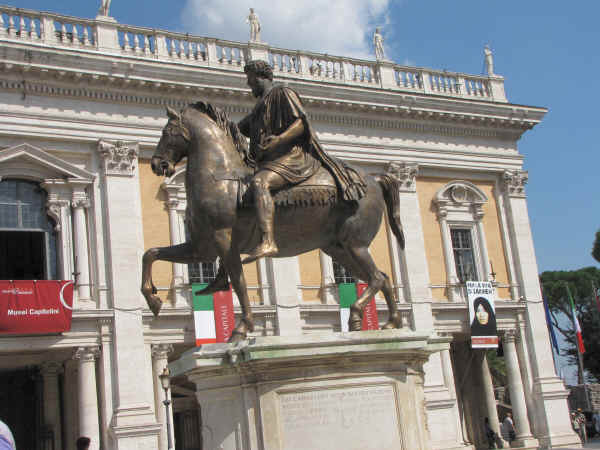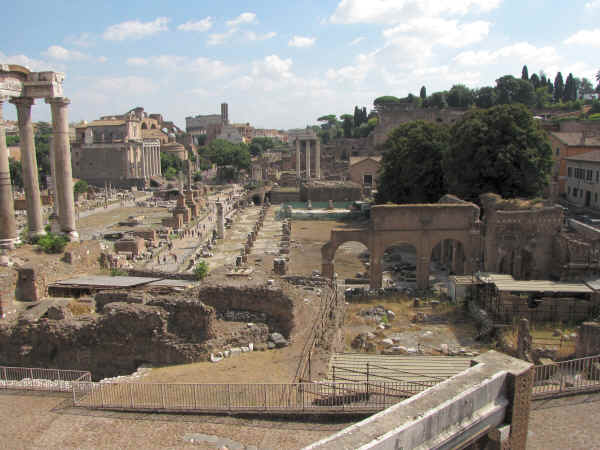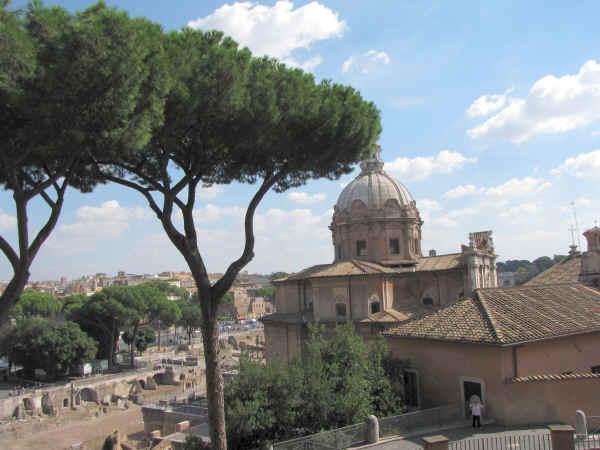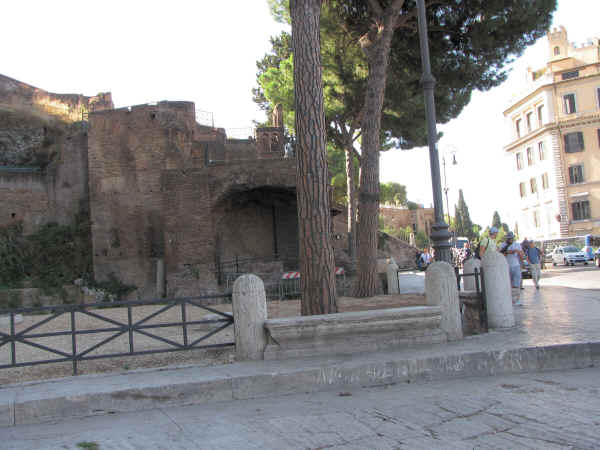
| The Capitoline Hill (one of the original 7 Hills of Rome)
is located near the center of modern Rome. The top of the hill is
occupied by a small piazza, Campidoglio, with no major streets
entering or leaving it. It's unique in that it and the buildings
around it were all designed by Michelangelo. His genius shows
through in the effort.
The Capitoline Hill was occupied by the Romans and their predecessors far into the past. A temple of Jupiter was built there in the 5th century BC. After assassinating Julius Caesar, Brutus, Cassius, and the other conspirators locked themselves into that temple before fleeing Rome to field an army. |
| The centerpiece of Campidoglio is the equestrian statue of the Emperor Marcus Aurelius. The statue was not to Michelangelo's liking but Pope Paul III, who commissioned him to design the piazza in 1536, thought the statue was of Constantine, the first Christian Emperor of Rome and insisted on its use. The statue has been replaced by an exact copy and the original is housed in a museum. |
|
|
|
|
 |
|
|
 |
|
|
 |
|
|
 |
|
|
 |
|
|
|
|
 |
|
|
|
|
|